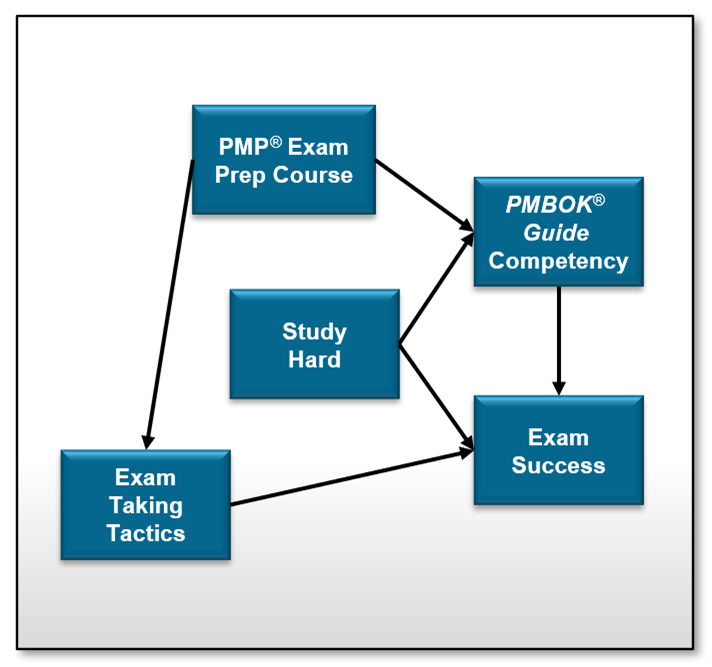As a Project Management Professional (PMP), influence diagrams are a valuable tool for illustrating influences on a project or project element. Project Management Academy can help you break down the influence diagram PMP significance in more detail. Understanding PMP influence diagrams can help as you study for the PMP exam and manage actual projects.
On this page:

Free Download:
The Ultimate Data Quality Guide
Learn about the 7 data quality
tools every project manager
should know!
What are influence diagrams?
When you are managing a project, it is essential to be aware of all the different factors that can influence your project from end to end. Influence diagrams are a modeling tool that can help. The Project Management Institute’s (PMI) PMBOK Guide defines PMP influence diagrams as follows:
“A graphical representation of situations showing causal influences, time ordering of events, and other relationships among variables and outcomes.”
In other words, an influence diagram is:
- A helpful diagramming technique using a chart, diagram, or other display of information
- A model showing how the events or activities in a project influence each other
- A representation of the chronological order in which a project’s events occur
- A depiction of any other relationships among a project’s variables and outcomes
Influence diagrams help PMPs illustrate and understand the relationships and flows between influential project elements.
Why are influence diagrams useful?
 To understand what makes an influence diagram PMP essential knowledge, you must first understand why PMPs need to know what can influence your project, when, and how. If you are aware of all the different influential factors for your project, you can anticipate uncertainties, identify and mitigate risks, and analyze situations to make informed decisions.
To understand what makes an influence diagram PMP essential knowledge, you must first understand why PMPs need to know what can influence your project, when, and how. If you are aware of all the different influential factors for your project, you can anticipate uncertainties, identify and mitigate risks, and analyze situations to make informed decisions.
Influence diagrams help PMPs anticipate uncertainties and identify and mitigate risks. They help you map out various potential scenarios, uncertain events, or conditions and determine how they would impact your project’s budget, timeline, and more. Creating a diagram is a fast and reliable technique for fleshing out potential and actual risks, which is crucial in project management assessment, prevention, and correction.
Uncertainties can also complicate decision-making during a project. An influence diagram PMPs use to identify the best decision may depict various influences to help you analyze situations and determine the impact of a decision on your project.
You can combine influence diagrams with other tools and techniques to discover uncertainties in various potential scenarios, perform risk analysis, single out risks that could directly influence desired outcomes, and more. Uncertainties are inevitable in any project. Using an influence diagram, PMPs can anticipate and mitigate risks and uncertainties to make smart decisions and keep the project moving forward.
Studying for the PMP Exam?
Understanding the anatomy of influence diagrams
What do PMP influence diagrams look like? Most commonly, influence diagrams use nodes and connectors to depict various project elements and demonstrate how they relate.
Nodes are used to represent various situations, events, activities, and other project elements. A simple influence diagram may use just one shape to differentiate information in the nodes. More in-depth diagrams may use various shapes to distinguish between node types. For example, in an influence diagram, PMPs may use oval shapes to depict uncertain events or conditions, rectangles to represent decisions, and octagons or diamonds to show values or outcomes.
Connectors, or arcs, are lines used to connect nodes. They are typically shown with arrowheads to depict the direction of influence. For example, if Node A connects with an arrow pointing to Node B, this means Node A influences Node B. Each node should have at least one connector.
Influence diagram example
Curious about what kind of influence diagram PMPs might use? Here’s a simple example:

In this influence diagram, PMP exam success is shown as the final outcome. As you can see from the influence diagram, a good PMP exam prep course will influence effective exam-taking tactics and your PMBOK Guide competency, both of which directly influence your exam success! You will also have to study hard using resources from the course, the PMBOK Guide, and more.
The best thing to do is take a PMI-approved PMP exam prep course with an Authorized Training Partner such as Project Management Academy. Our PMP exam prep course provides exam-taking tactics and PMBOK Guide competency, and it also fulfills your PMP 35 contact hours requirement. Students also receive access to our online PMP training portal with practice PMP exams and questions, strategy guides, application resources, and much more.
Interested in earning your PMP certification? Check out Project Management Academy’s in-person classrooms and online training!
Upcoming PMP Certification Training – Live & Online Classes
| Name | Date | Place |


 New Horizons
New Horizons
 Project Management Academy
Project Management Academy
 Six Sigma Online
Six Sigma Online
 TCM Security
TCM Security
 TRACOM
TRACOM
 Velopi
Velopi
 Watermark Learning
Watermark Learning
 Login
Login




 New Horizons
New Horizons
 Project Management Academy
Project Management Academy
 Velopi
Velopi
 Six Sigma Online
Six Sigma Online
 TCM Security
TCM Security
 TRACOM
TRACOM
 Watermark Learning
Watermark Learning